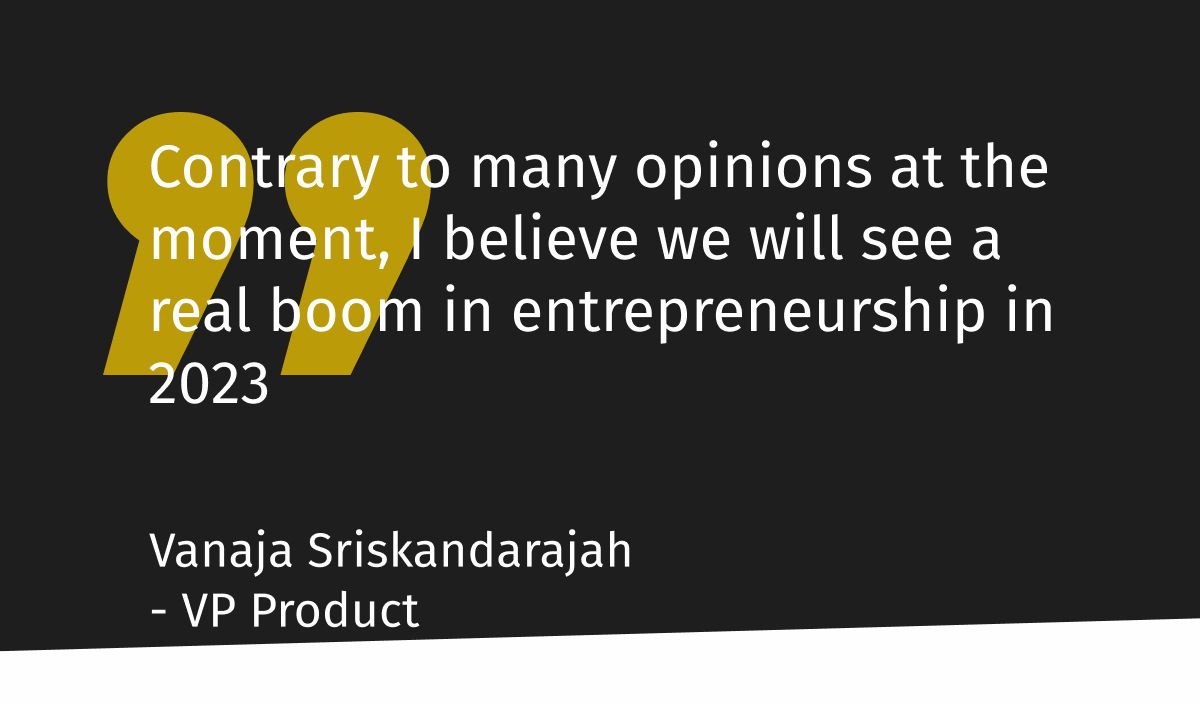Fintech Trends for 2023
After an eventful 2022 that turned the global economy on its head, let's take a closer look at the fintech world's predictions for 2023. Vanaja Sriskandarajah, VP Product at Billies, gives us an insight into her fintech trends for the year.

2022 was a turbulent year for tech. The rapidly changing macroeconomic conditions had drastic consequences: Many workers faced layoffs, companies had to sell to competitors because they couldn't present a reliable, timely path to profitability, and some businesses even had to shut down operations for good. In this new economic environment, in which interest rates continue to rise, and cash is no longer as cheap as it has been for the past 15 years, the question arises: What does the short to midterm future hold for fintech start-ups? I will venture a look into my crystal ball and make my predictions for (fin)tech in 2023.
Boom in Entrepreneurship
Contrary to many opinions at the moment, I believe we will see a real boom in entrepreneurship in 2023. Despite the macroeconomic environment, there is still plenty of “dry powder” sitting with VCs that is waiting to be spent on exciting opportunities. This makes me optimistic about a new wave of (fintech) start-ups – especially since we have a lot of highly qualified tech talent coming to the market as a result of lay-offs or business closures, who have ample savings and are looking to start their own ventures. Obviously, business models will now be scrutinized more carefully and need to prove that they can deliver sustainable growth. That paradigm shift will remain true. But I firmly believe that many VCs will make a bet or two in the early-stage space.

Crypto Winter is here to stay
2022 was not a pleasant year for crypto and its investors. The most recent FTX bankruptcy only marked another low point in a prolonged bear market we’ve been witnessing for a while now. The global crypto market capitalization, which makes up the total value of all crypto assets, has fallen roughly 64% from $2.2 trillion to about $797 billion a year to date, according to CoinMarketCap data. The two largest cryptocurrencies by market cap, bitcoin and ether, have fallen 64% and 67%, respectively, during the same time frame. Unfortunately, I don’t think crypto prices have necessarily reached the bottom yet. Crypto as an asset class is largely driven by sentiment and what I now observe is an inherent skepticism amongst the investment community that will be hard to overcome. Crypto was gaining traction as a viable alternative investment for institutional investors, but this past year it proved to have a high correlation with the stock market and got crushed with other risk assets. Hence, I expect institutional investors to be a lot more cautious in their approach to crypto allocations in the future.
Continued Differentiation of Buy Now, Pay Later Players
Despite what many doomsayers were predicting, BNPL top-dog Klarna was able to present impressive numbers as of this fall. In the key metrics that matter most in the current economic climate – reduction in credit losses as well as total operating expenses and thus increased margins – the team reported very promising results. Sure, there’s still some way to go. But for a company of that size, a turnaround like this is no small feat. Looking at 2023, I expect the company to build on these fundamentals and come closer to – if not reach – profitability again. At the same time, with companies like Apple and Mastercard launching their own Buy Now, Pay Later offerings, the BNPL space will continue to become more and more fragmented. While we will most likely see a consolidation happening in 3–5 years at the earliest, the building blocks for success will be set up now. I believe that this battle won’t be decided on the front of who can offer the lowest prices, but rather who will be able to differentiate themselves with the most user-centric, value-adding features to both merchants and end customers.
RegTech Investments will reach a new high
With more and more financial services going digital, the pressure on regulators to tackle fraud and other financial security hazards increases. On the other hand, this means that it is becoming more and more difficult for fintechs to navigate regulatory provisions efficiently. In their 2022 report, Juniper Research predicted a 200 percent growth in market size from $67.6bn in 2022 to $203.5bn in 2026 for regulatory solutions. If these signs are to be believed, I think 2023 is likely to be a particularly strong year for RegTech.
Even though much depends on the overall macroeconomic development and beginning-of-the-year predictions like these are always a bit of guesswork, I think a good case can be made for each of these points. Let's see what 2023 has to offer for our industry.